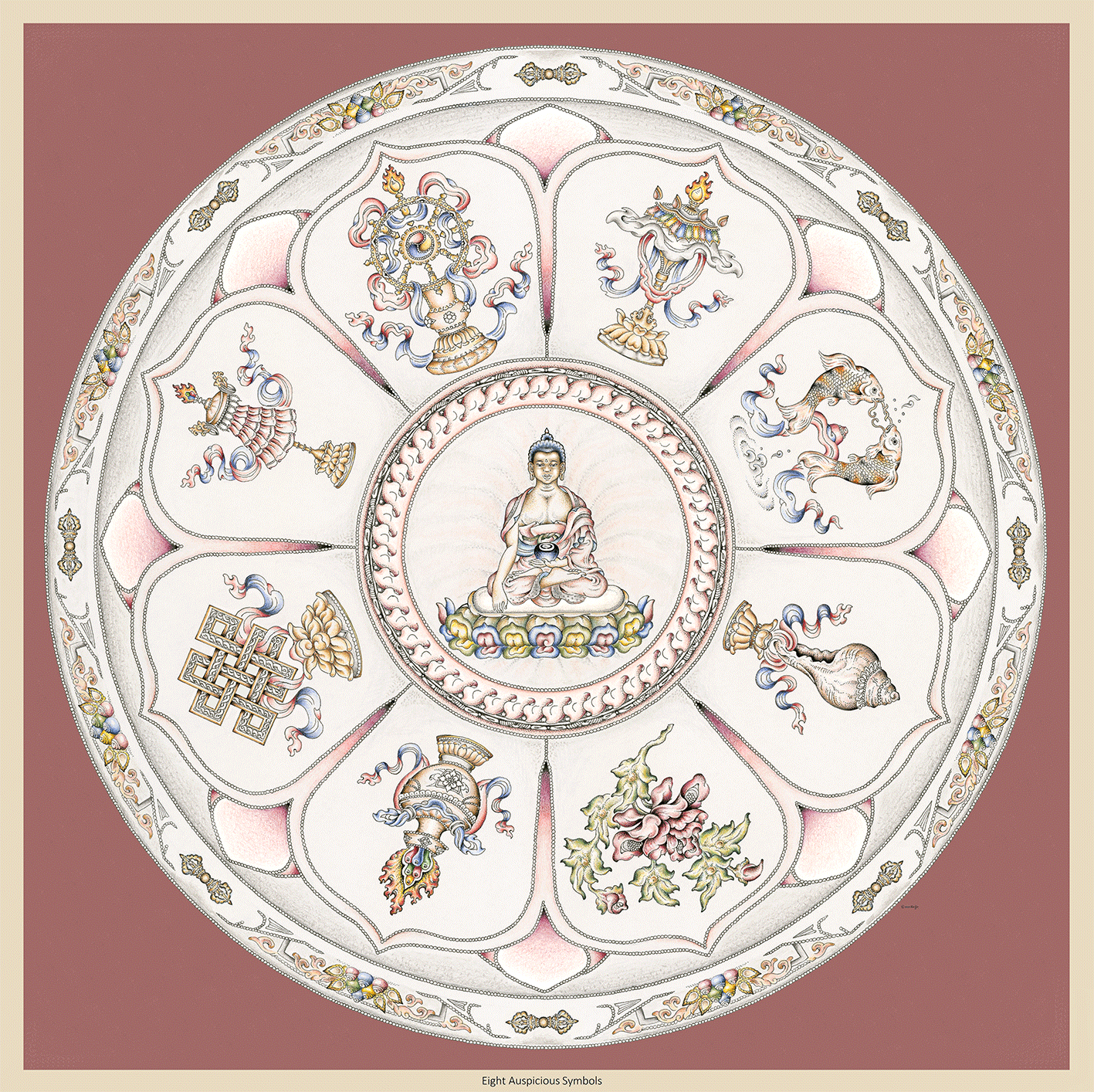The Eight Auspicious Symbols
Common in Tibetan Buddhist art, the eight auspicious symbols are both a meditational practice and a teaching tool symbolizing the qualities of the enlightened mind.
Originating from ancient Indian ceremonies, these eight auspicious symbols represent the offerings made by the gods to Buddha Shakyamuni following his enlightenment.
The Parasol
A traditional Indian symbol of protection and royalty, the parasol offers all sentient beings the refuge of Buddha’s teachings, the Dharma.
Just as the parasol protects from the sun, all beings are protected from the heat of suffering, desire, obstacles, illness and harmful forces. The parasol’s dome represents wisdom, its skirt – compassion.
Pair of golden fish
Originally, the golden fish represented the two sacred rivers of India: the Ganges and Yamuna.
In Buddhism, the two golden fish symbolize fertility, abundance and happiness as they have complete freedom of movement in the water – just like the enlightened state of fearlessness without drowning in cyclic suffering.
The White Conch Shell
Traditionally considered scared and rare, right-spiralling conch shells were depicted by mythical Indian heroes and gods as a symbol of power and authority. In Buddhism the white conch shell represents the deep, beautiful, melodious sound of Buddha’s teachings – the Dharma – penetrating the ten directions, awakening practitioners from the deep sleep of ignorance and urging them to attain enlightenment.
The Lotus
Symbolizing purity and renunciation of samsara, the lotus flower represents the primordial purity of body, speech and mind floating above the muddy waters of attachment and desire. Its roots are in the mud at the bottom of the pond and yet its flower lies immaculate above the water, unstained by the watery mire of cyclic existence.
The Treasure Vase
Representing health, longevity, wealth, prosperity and wisdom, the treasure vase remains perpetually full, however much is removed from it. Similar are the Buddha’s teachings: no matter how many teachings Buddha shared, the treasure never lessened.
The Endless Knot
Originally a Hindu symbol of the goddness Lakshmi, the endless knot represents the unity of wisdom and compassion in Buddhism, as well as dependent origination – the underlying reality of all phenomena.
Seen on the roofs of Tibetan monasteries and temples, the victory banner was traditionally a military standard of ancient Indian warfare, representing the Buddha’s victory over the four maras or hindrances on the path to enlightenment: pride, desire, delusions and the fear of death.
The Dharmachakra
Representing the three turnings of the wheel of Dharma by the Buddha, understood as the wheel of transformation or spiritual change, the wheel’s eight spokes point to the eight directions, symbolizing the Buddha’s Noble Eightfold Path. Its hub symbolizes moral discipline, the eight spokes – analytical insight, and its rim – meditative concentration.
Ⓒ 2003-2023 Matmonet All Rights Reserved
